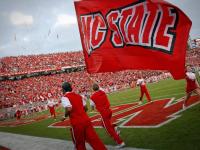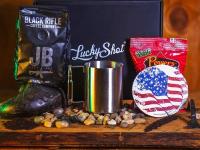Exotic Nutrition is an online pet food company that sells over 200 products for various pets. They are a family run and owned business that has grown to sell on various platforms, B2B and B2C and now has its own warehouse production space. Our team manages all of their digital advertising across multiple platforms, aiming to profitably scale ecommerce revenue.
Challenges
The Exotic Nutrition storefront features a large number of products with a wide price and profit margins. Without baseline expectations regarding average profit margins or return on ad spend targets, profitably scaling revenue over the course of a large product catalog becomes increasingly difficult. In addition to the goals of our specific ad campaigns, we also needed to help the client to better understand their internal financials as they grew.
What’s more, if we had access to better data regarding actual profits, we could improve the efficacy of the machine learning algorithms that drive the PPC campaigns.
Strategy
A standard e-commerce client tracks revenue as one of its main financial objectives. Sales and top line revenue typically become the primary conversion actions that drive the majority of marketing efforts.
Unfortunately, traditional conversion tracking methods often obfuscate the bottom line profit that clients earn as a result of their campaigns.
Let’s look at an example. In Case A, ABC Corp spends $1,000 to produce $5,000 of revenue. In Case B, XYZ Corp spends $1,000 to produce $4,000 of revenue. It is possible that Case B made more profit than Case A. It all depends on the unique variables that contribute to each company’s Cost of Goods Sold (COGS). If the COGS of the products sold in Case A was $2,000 and the COGS of the products in Case B was $1,000, Case B would have had $1,000 more profit than Case A!
As a result, many PPC accounts are optimizing for goals that are based completely on assumed averages, and not on actual profit. At the end of the day, top-line revenue does not pay the bills - profit does.
To solve this issue, we worked with an external development team to create a custom dataLayer variable that calculated the profit margins for each individual product, then pulled this variable through the checkout experience and calculated the sum total of profit on the order confirmation page. We then created a new Google Ads conversion action that pulled profit as the value variable, as opposed to revenue.
The last piece of this puzzle was to implement ongoing quality assurance with the client\'s internal team to ensure that the profit values were correctly entered into the backend of the website (It is integral that those numbers are accurate as they are now being used to send conversion values back to Google).
After many rounds of edits and dozens of tests, we had confirmed that we were accurately calculating profit totals and pulling these numbers back into the Google Ads platform.
We were now reporting on the amount of profit earned as a result of our campaigns, but that wasn\'t our only goal. Ultimately, we wanted to train Google’s algorithms to specifically optimize for earned profit.
As we switched to optimizing for profit (which would replace total revenue in the Conversion Value column), nuanced campaign segmentation became less important. We had previously been required to separate our campaigns based on individual ROAS goals (depending on individual product margins), but now that the dataLayer variable was automatically adjusting for profitability differences on the back-end, we only needed to ensure that nominal ROAS in the Google Ads account exceeded 1.00.
This allowed us to consolidate our campaigns, thus increasing the ability for the machine learning to capitalize on ad auctions that would yield the highest return.
(For more information on the benefits of campaign consolidation, check out this blog post. For more information about the benefits of automation as a whole, check out this keynote presentation.)
Results
We finally established a baseline of profitability that the account had earned. After implementing new strategies that specifically optimized for profit, overall bottom-line earned profit increased by 62%, relative to the benchmark, in just three months.
Thanks to these efficiencies gained, these profits could be reinvested in scaling revenue. During the same period, we increased top-line revenue by 49%.
Topline ROAS also saw an increase of 18% over this period, but what’s more important is that actual profit on ad spend increased by a far-greater number. If it wasn’t for the true understanding of profitability in the account, we could never have confidently invested in growing overall revenues by such a large percentage.

















